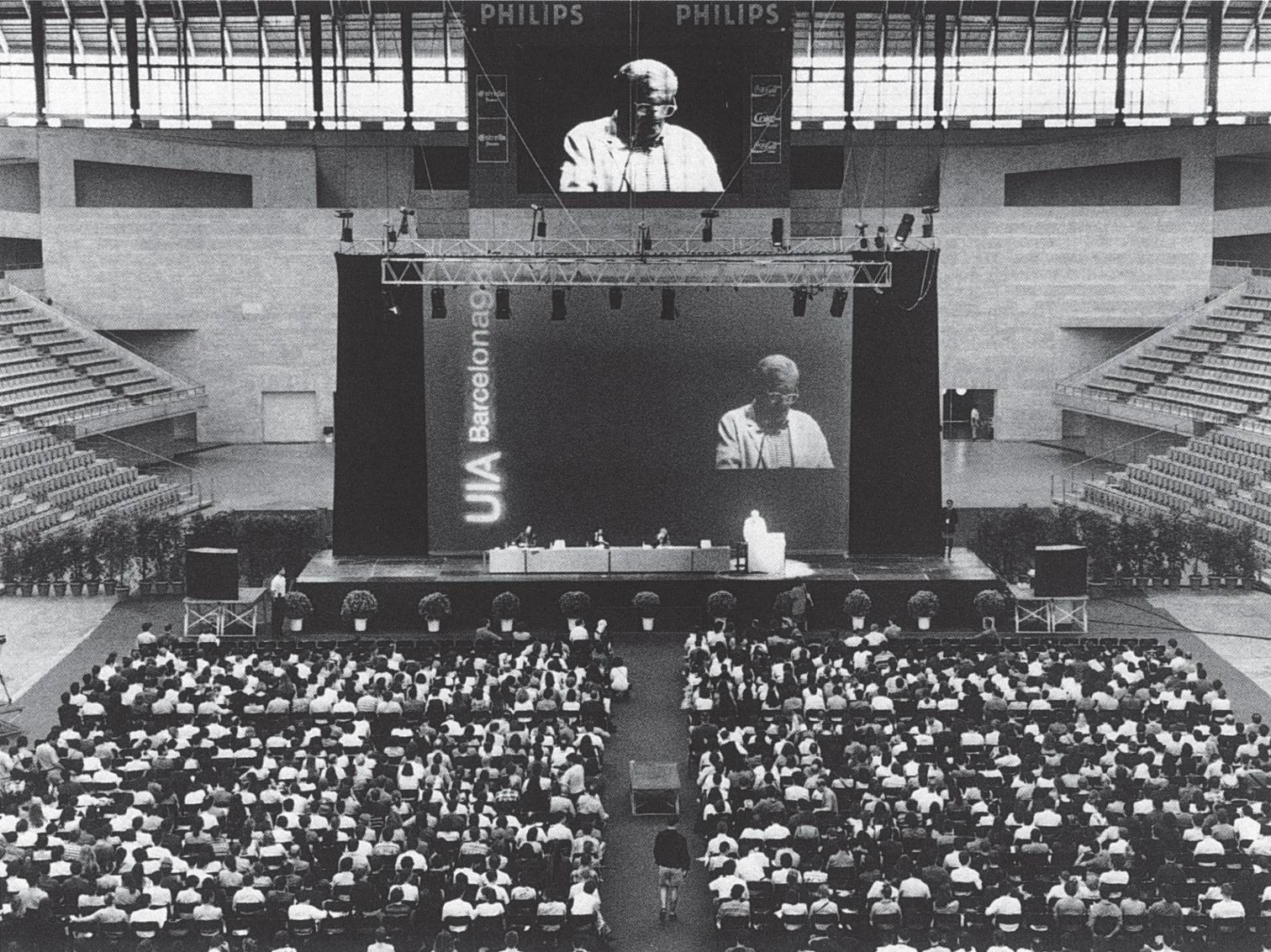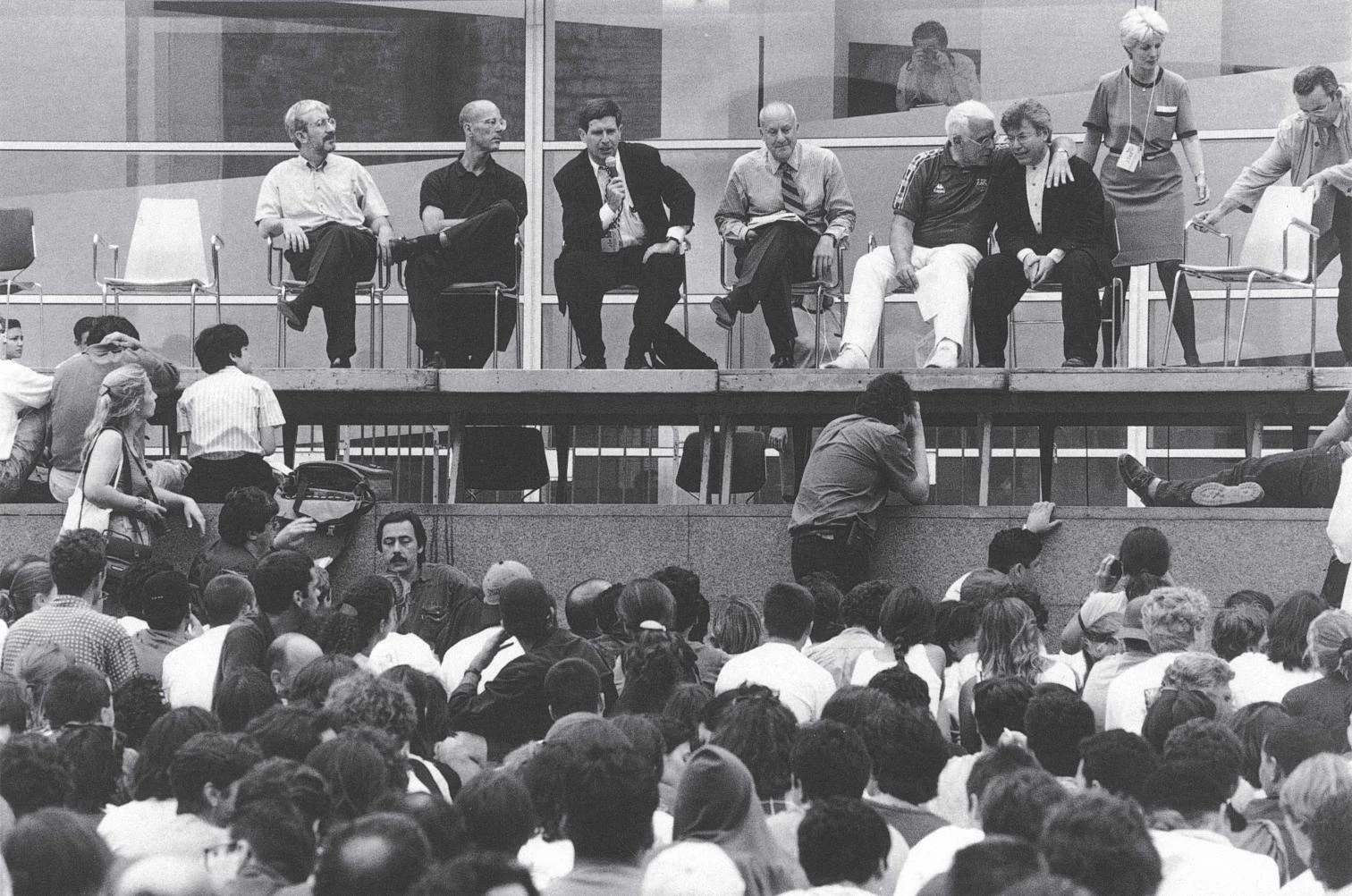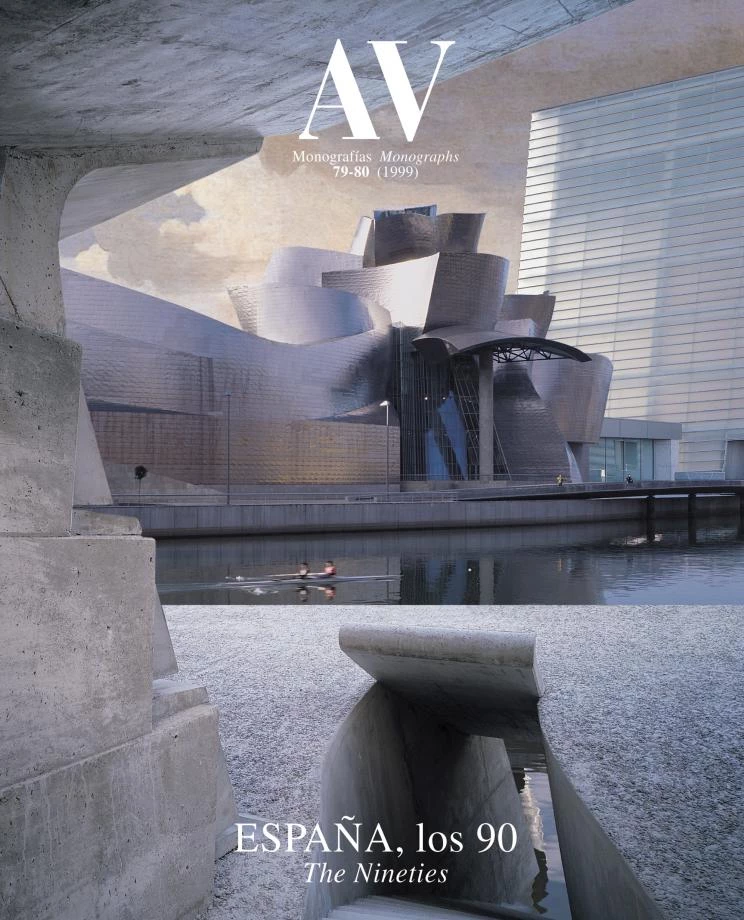The Spectacle of Architects
The nineteenth Congress of the UIA, held in Barcelona during the summer, has thrown light on the mediatic nature of contemporary architecture.
It had to happen. The spectacle of architecture has become a spectacle of architects. The emblematic buildings of recent times have turned their authors into mediatic stars avidly sought after for interviews, statements or lectures. At the Barcelona UIA (International Union of Architects) congress, young crowds mob their heroes with requests for autographs or photo opportunities, and security guards are regularly compelled to rescue speakers overwhelmed by the tide of fervor. If the organizational difficulties that have caused the massive throng of convention participants make it impossible to project images of buildings, it is of little matter; architects construct buildings with the immaterial substance of words, and the devoted multitude engages in warm communion with the high priests of this demanding religion.

Such effusive enthusiasm throws a certain amount of light on the infectious virtue of architecture for those who practice or study it; but it also sheds light on the nature of the relationship between the elites and the public in the society of spectacle. Paradoxically, the passion for architects does not always run parallel to a passion for buildings. Many of those participating in the congress will leave the city – perhaps never to return – without having visited the perpendicular and Gothic emotion of the Church of Santa María del Mar, the ordered and magical labyrinths of Parc Güell, or the committed and civil modernity of the Antituberculosis Dispensary; instead they will take with them a signature of Norman Foster on a program or a snapshot of Peter Eisenman donning a blue and garnet Fútbol Club Barcelona sweat shirt.
The current popularity of architects significantly exceeds the popularity of architecture itself. Below and above are two images of the multitudinous gathering of the UIA Congress in Barcelona.

Victor Hugo predicted that the book would kill architecture, and indeed, the diffusion of the printing- press did much to end the symbolic monopoly of buildings. In the era of mass media, architecture has undergone a further retrogression in its usefulness as a vehicle of meanings, and is often reduced to mere images that can be consumed from a distance, making firsthand visits almost unnecessary and often disappointing. Thus the contemporary popularity of architects is not necessarily accompanied by the popularity of architecture, but rather by a penchant for its images, and it is no longer books, but architects themselves – through their widespread success – that threaten the future of this ancient discipline. However, the noisy spectacle of architects should not be allowed to cloud the silent and necessary reality of architecture.






